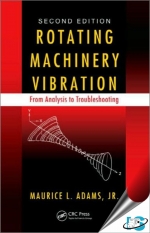Tab Article
Diagnosis and correction are critical tasks for the vibrations engineer. Many causes of rotor vibration are so subtle and pervasive that excessive vibration continues to occur despite the use of usually effective design practices and methods of avoidance.
Rotating Machinery Vibration: From Analysis to Troubleshooting provides a comprehensive, consolidated overview of the fundamentals of rotating machinery vibration and addresses computer model building, sources and types of vibration, and machine vibration signal analysis. This reference is a powerful tool to strengthen vital in-house competency on the subject for professionals in a variety of fields.
After presenting governing fundamental principles and background on modern measurement, computational tools, and troubleshooting methods, the author provides practical instruction and demonstration on how to diagnose vibration problems and formulate solutions. The topic is covered in four sequential sections: Primer on Rotor Vibration, Use of Rotor Dynamic Analyses, Monitoring and Diagnostics, and Troubleshooting Case Studies.
This book includes comprehensive descriptions of vibration symptoms for rotor unbalance, dynamic instability, rotor-stator rubs, misalignment, loose parts, cracked shafts, and rub-induced thermal bows. It is an essential reference for mechanical, chemical, design, manufacturing, materials, aerospace, and reliability engineers. Particularly useful as a reference for specialists in vibration, rotating machinery, and turbomachinery, it also makes an ideal text for upper-level undergraduate and graduate students in these disciplines.


